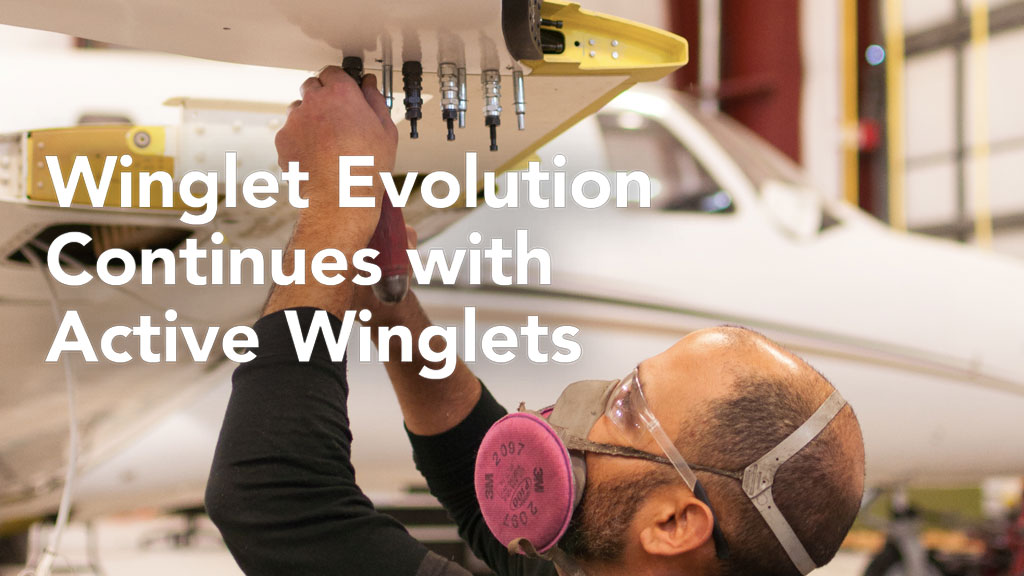The evolution of winglet technology traces farther back than many may think—back more than a century, when the English engineer, Frederick Lanchester, patented wing end plates in 1897 and Scottish-born engineer William Somerville attached end plates to the top wing of his biplane 13 years later. In recent decades, incited by soaring fuel prices in the 1970s, the evolution accelerated and ushered the launch of various wingtip enhancements, including canted winglets, wingtip fences and raked wingtips, among others. Learjet was the first original equipment manufacturer (OEM) to provide winglets on a production aircraft, the model 28, in 1977. Today, many bizjets and commercial aircraft are equipped with these devices because they reduce fuel burn by diminishing lift-induced drag caused by air spilling off the end of the wingtip.
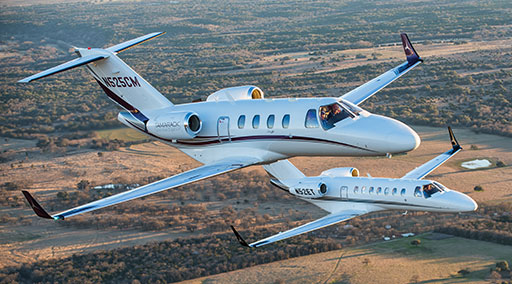
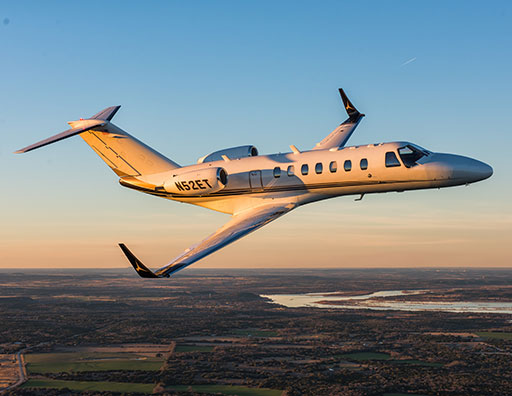
And the winglet evolution continues. One of the latest innovations comes from a small manufacturer based in Idaho’s panhandle, only a short distance from the Canadian border. Tamarack Aerospace Group (TAG), based in Sandpoint, Idaho, has developed its unique Active Technology Load Alleviation System (ATLAS) winglet, the brainchild of Nicholas (Nick) Guida, a former FAA designated engineering representative and TAG’s founder and chief technology officer. Formerly employed by several OEMs and once owner of a consulting firm, Guida had considerable experience on retrofit winglets. But he was dissatisfied with the amount of structural reinforcement required to the wing (as much as hundreds of pounds for commercial aircraft) for a winglet installation and wondered if the added structural weight could be avoided by designing a winglet that automatically “turns itself off” during load moments. He conceived an “active” winglet design, which “dumps” the bending loads on wings, thus avoiding the need for structural reinforcement. Guida surmised that such a design could enhance and add to the benefits inherent in “passive” winglets, already installed on many aircraft.
David Stewart, a partner with Oliver Wyman, a New York-based global management consulting firm, put the Middle East MRO market share at $8.9 billion with a 4.3 percent growth expected through 2028. He also noted that engine maintenance drives about 60 percent of this spend, a higher portion than other regions because of the preponderance of wide bodies in the Middle East as well as the harsh operating conditions. Today, most of the Middle East engine work is outsourced to third parties. The rest is spread out over airframe, component and line maintenance.
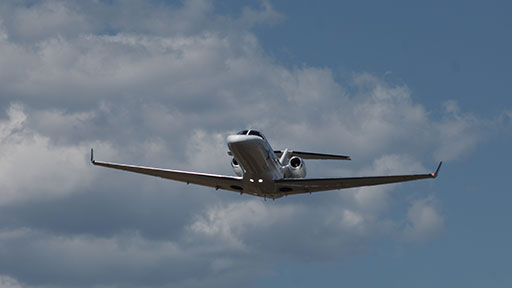
Majority of the work will be for the large fleets purchased by the ME carriers over the last 10 years that are now hitting the ramp up for their first heavy maintenance visits, Stewart said.
He also noted that a major problem is going to be finding a source of highly skilled maintenance personnel. Many experienced mechanics are at their retirement age, with a shortfall of workers to replace them, and there’s lots of competition for personnel with the right skills. The Airbus forecast reported an expected demand for 58,200 new technicians over the next 20 years.
An Oliver Wyman study last year found that within 10 years, the worldwide demand for maintenance technicians will outstrip supply by 9%, with perhaps a bigger problem being that an “expertise gap” will be created with the worldwide fleet being divided between older and newer technology aircraft.
Initially for CJs
Guida initially tested his active winglets on a piston-powered Cirrus SR20. After four to five years of design refinement, his company began producing ATLAS winglets for Cessna CitationJet models and succeeded in gaining EASA certification for the system on the CitationJet 525 series (CJ, CJ1, CJ1+ and M2) in 2015. FAA, ANAC and Transport Canada approval soon followed. TAG went to the European Aviation Safety Agency for certification first for the sake of expediency, since FAA’s approval process was effected by the federal budget sequestration. Recently, all four agencies have granted supplemental type certificates (STCs) for ATLAS winglets retrofitted on the CitationJet 525A series (CJ1 and CJ1+) and 525B series (CJ3 and CJ3+). STCs for additional CitationJet models, including the 560XL series (Excel, XLS and XLS+) are in the works.
The manufacturer’s suggested retail cost for the current STC’d systems on CitationJets ranges from $209,000 for the CJ1 to $319,000 for the CJ3+.
Looking beyond CitationJets, TAG officials are in discussions with operators of other bizjet types, as well as original equipment manufacturers (OEMs), commercial aircraft operators and potential military customers. However, as this is written the company is not prepared to announce future customers or future winglet designs. ATLAS winglets are suitable for “any aircraft with wings,” according to company literature. “If there is a large fleet without winglets installed, like the [Lockheed] C-130, then we would have an advantage in outfitting those aircraft,” says Paul Hathaway, TAG’s vice president-marketing.
The company did unveil a demonstrator model of its Commercial Active Winglet (CAW) for the Airbus A320 at last year’s National Business Aviation Association show in Las Vegas, Nev. “We’re in discussion with an A320 operator,” Hathaway says, adding that he was not able to disclose its name.
How Active Winglets Work
From a distance, the ATLAS system appears like most other winglet designs, with its upturned wingtip. But a closer look reveals why it is different and can truly be called active. On the CitationJets, the system lengthens each wing by about three feet (0.9 m). Within the extension to each vertical winglet there exists a TACS (Tamarack Active Camber Surface). Made of aluminum, the TACS appears and functions like a small aileron, moving up and down. But instead of controlling flight maneuvers from pilot input, the TACS serves by reducing bending loads on the wing, and works automatically.
The load alleviation process is triggered by the ATLAS control unit (ACU), which includes sensors that detect wing loading, say, during steep turns or turbulence. Once the ACU determines if a certain load threshold has been reached it then commands the TACS control unit (TCU), an actuator that moves the TACS up or down, to mitigate the load. The entire process occurs within milliseconds. During normal 1G accelerated flight, the TACS is stowed in trail. In cruise, or normal flight, they move little, if at all, only reacting to alleviate loads as they occur.

Being fully automatic, the pilot needs to do no more than press a push-to-test button during preflight to assure the ATLAS system is operational. A red annunciator light will indicate a system failure. Should a failure occur—for example, a TACS locks up—the pilot would simply “slow the aircraft to the indicated airspeed shown on the annunciator, which is still pretty high, typically 160 knots,” the official adds.
What if the ATLAS winglet system fails and no warning light illuminates? Tamarack officials have calculated such a failure would occur fewer than once in every one billion flight hours.
The commercial aircraft winglet Tamarack introduced at NBAA holds a different design and offers additional features. In addition to having TACS move up and down, the CAW system has the winglet articulate, twist left to right, to achieve optimal aerodynamics. It also includes a strip on the winglet’s leading edge to prevent excessive loads from side gusts. The CAW has sensors providing numerous inputs to determine the optimum TACS deflection and winglet toe angle, taking into account the aircraft’s airspeed, angle of attack, g force and flight regime, according to Hathaway. Also, while the TACS on the ATLAS system for bizjets only deflects to unload the winglet, the TACS on the CAW will also “droop” to achieve optimum climb performance.
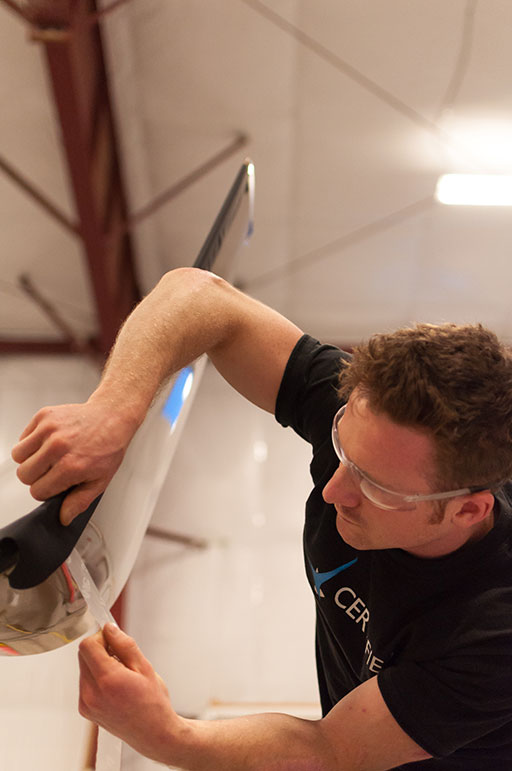
The Benefits
Most aircraft operators install winglets for the fuel savings, and passive winglets generally provide a three- to four-percent reduction in fuel burn. TAG officials, however, boast a fuel savings that is three and four times greater with its ATLAS system. They have determined that the range of the Citation CJ3+ with active winglets, for example, is increased from 1,700 nm to 2,100 nm plus IFR reserve. “That makes it a coast-to-coast airplane,” says Hathaway, referring to the distance across the U.S. “It gives the operator more airport-to-airport options without the need to refuel.”
One CJ1 operator reported “a 15-percent gain in fuel savings,” says the marketing vice president. “But, of course, the savings ultimately depends on aircraft use. The big benefits come on long trips, going directly to flight level 410, with a full load of passengers on board.”
The ATLAS winglets also allow a faster time to climb and better single-engine climb performance. Another CJ1 operator claims he has had his ATLAS-equipped aircraft “climbing to FL400 in 20 minutes and maintaining a 1,000-feet-per-minute climb.” He adds that he often flies within the 390 to 410 flight-level range, and before the ATLAS installation, it took “40 to 45 minutes to get there, usually requiring an intermediate stop for a couple of minutes along the way.”
TAG lists other benefits from its active winglets: reduced carbon dioxide emissions, improved hot and high performance, higher useful load and lower airport noise. On the CitationJet 525 series, the winglets allow 400 pounds additional maximum zero fuel weight (MZFW). ATLAS’s load alleviation also makes the ride smoother and more stable, a benefit especially to passengers. Performance enhancements can be attributed, in large part, to ATLAS’s weight-saving, bolt-on design. Finally, as with all winglets, the ATLAS system tenders better ramp appeal, giving the aircraft a more up-to-date appearance and thus greater resale value.
Installation and Maintenance
Regarding maintenance to the ATLAS winglets, there is no change to the normal requirements of inspecting and maintaining the aircraft’s wings, says an official. Inspections of the ATLAS system are carried out “during the [Cessna] DOC 4 and DOC 10 inspections, except if the installation has less than 12 months or 100 hours in service,” he adds. There is no additional inspection to the wing’s hydraulics, since the ATLAS system is all electrical. The ACU has no overhaul time limit, and all other parts are repaired or replaced on an on-condition basis.
The ATLAS winglets are currently being installed on CitationJets at TAG’s facility on Sandpoint Airport and at Cessna Service Centers. To supply the Tamarack facility and service centers, TAG currently is producing three winglet kits per week. Cessna Service Center technicians come to Sandpoint for installation training, and TAG sends factory representatives to the service centers to assist their technicians with their first “couple of installations,” according to a TAG official.
Usually, two to three technicians attach the winglet. No specialized tools are required, except for a dedicated jig used to ensure the TACS are geometrically correct. Wiring is needed to connect the ACU to the TCUs and to the cockpit annunciator light. Wiring also goes to the LED navigation lights, which come with the winglets.
TAG recently added a second hangar at Sandpoint Airport and increased its ATLAS installation rate from two a month to one a week. “We provide CJ owners with two options,” says Hathaway. “If you are having major maintenance on items like avionics or engines, then a Cessna Service Center can install active winglets while the aircraft is in for that work. Alternatively, if you just want active winglets installed with no other work on the aircraft needed, then we can do that in just over a week here at the factory in Sandpoint.” Complexity of the winglets’ paint scheme could impact the exact installment time.
